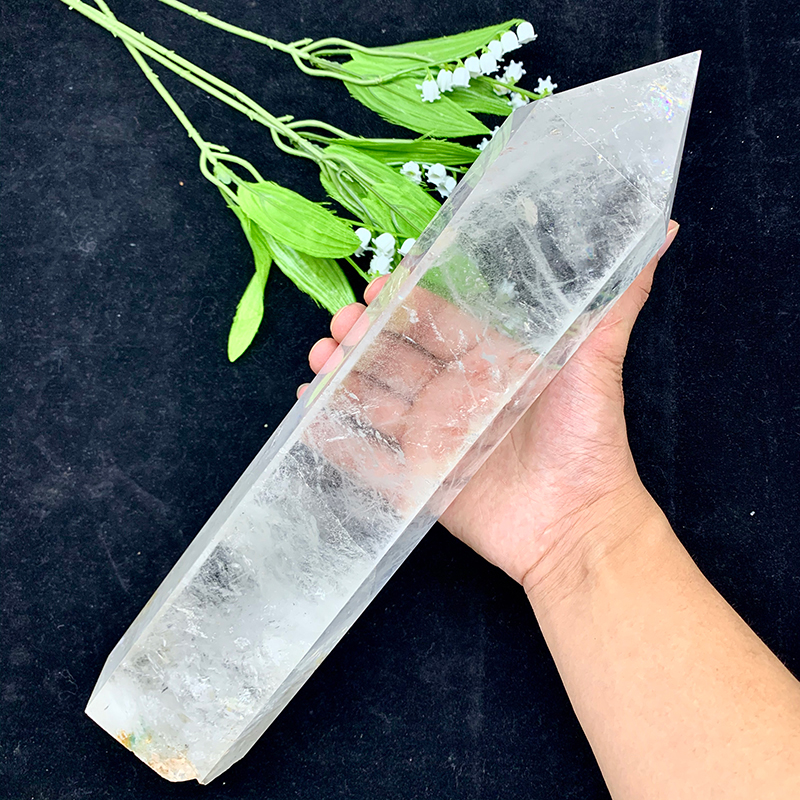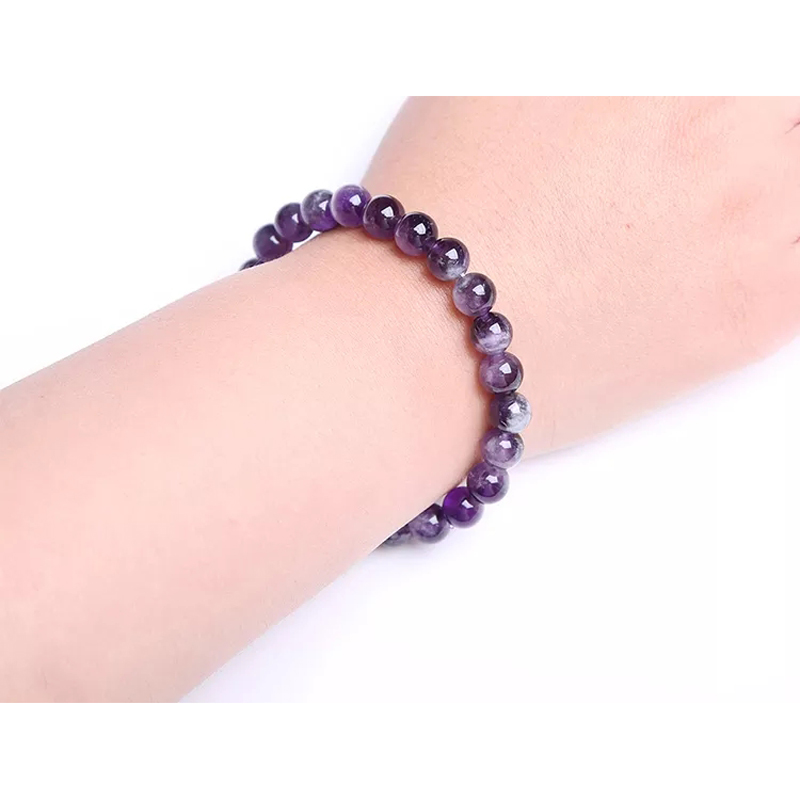Home → Features → Natural Sciences → Geology and Paleontology → Rocks and Minerals
It's remarkable what a few repetitive atoms can do. Rough Stone Point

Quartz is one of the most common crystals in our planet’s crust, consisting of chemical elements (Silicon and Oxygen) that are also very common in our piece. But quartz crystals have fascinated humans for centuries, and several industries have important uses for quartz. So what’s so special about it?
Quartz has been known for a long time. In the 3rd century BC, the philosopher Theophrastus called it “kristallos”, the world that gives us the word “crystal” that we use today. The ancient Greek word hinted at solid ice, as Theophrastus thought quartz was a form of supercooled, permanently solidified ice.
You can’t really blame him. Quartz is remarkably transparent (or translucent), although it can also appear in colored varieties (as we’ll see soon enough).
In the 17th century, Danish scientist Nicolas Steno studied quartz, paving the way for our understanding not just of quartz, but of crystallography in general. He figured out that regardless of a quartz crystal’s size or shape, its long prism faces are always joined at a perfect 60° angle. This suggests that all quartz crystals have a similar, repeating structure.
The mineral itself has a relatively simple structure. Its atoms are linked in a continuous network of tetrahedra, with one atom of Silicon and 4 atoms of Oxygen. However, each oxygen is being shared between two tetrahedra (hence the SiO2 chemical formula).
Quartz belongs to a crystal family called the trigonal crystal system, also called the rhombohedral system. The ideal crystal shape is a six-sided prism that terminates with a six-sided pyramid at each end. However, natural crystals that truly follow this shape are rare compared to more common, imperfect crystals. Quartz crystals are often twinned or intergrown with adjacent crystals.
As the second most common mineral in the crust, quartz shows up in all sorts of rocks. Primarily, it appears in granite or other types of igneous rocks. Because it is more resilient to weathering, quartz can also reach sedimentary or metamorphic rocks. In fact, a high presence of quartz is often regarded as a sign of rock “maturity” — a rock that has been weathered for a long time, and quartz is the primary mineral that withstood erosion.
You can find quartz in all sorts of rocks, but it is formed in igneous rocks. Silicon dioxide dissolves in magma, but only at high temperatures and pressures; as magma reaches the surface or cools down for another reason, the crystals start to form. The slowerthe magma cools down (if the chemistry is just right), the bigger the crystals. The largest quartz crystal was found in Brazil, measuring over 6 meters in length and weighing almost 40 tons.
More commonly, however, quartz crystals are much smaller, and they can come in various colors as well.
Quartz exists in two forms, the normal α-quartz and the high-temperature β-quartz which only exists when quartz is heated to temperatures of over 500 degrees Celsius. But since most people don’t truly interact with β-quartz, when we think of quartz varieties, we typically talk about color varieties.
Since antiquity, varieties of quartz have been commonly used in the making of jewelry and tools. The Irish called quartz ‘sunstone,’ and across much of Eurasia, quartz was used as a gemstone.
Part of that is the color. Pure quartz is transparent or translucent, as mentioned; but things aren’t often pure in nature. Whenever quartz is impure, it gets colored. Sometimes, the color can be bright violet or indigo, as in the case of amethyst, or yellow, as in the case of citrine (two quartz varieties) — but the color is still owed to the impurities.
We have a separate in-depth article about all the pretty types of quartz and the reason they have the colors they do. Notable varieties include rose quartz and smoky quartz.
It should also be said that there are some pseudo-quartz varieties out there. Quartz is a crystalline rock, but varieties that are similar to quartz but also have uncrystallized mass also exist. Chalcedony, for instance, is a variety that contains fine intergrowths of quartz, with small crystals and possibly, some uncrystallized mass. Agate consists of chalcedony and quartz as its primary components. Carnelian, onyx, heliotrope, and jasper are other varieties.
While these can also be colored naturally, it’s not uncommon for sellers to dye them to increase their price and appeal to potential buyers.
Quartz is used in billions of devices, from GPS and clocks to smartphones and computers. Its key property that makes it so valuable is piezoelectricity.
This property was discovered by Pierre Curie and his older brother Jacques. Basically, a quartz crystal develops positive and negative charges on opposite prism edges when it is subjected to pressure or tension. Conversely, alternating opposite charges will cause alternating expansion and contraction. Because of this property, it can be used as a pressure gauge or in other applications
Quartz crystals also vibrate at very precise frequencies — so precise that quartz oscillators can be used as accurate time-keepers. This makes them valuable for devices that need to transmit signals with precise and stable frequencies — so pretty much all modern transmitters. Quartz plates are commonly used as frequency control for this purpose. But not all crystals used for this are natural; nowadays, it’s quite the opposite.
By the 1930s, pretty much the entire electronics industry was dependent on quartz crystals. But these crystals came from Brazil, and during WWII, supplies to and from Brazil were heavily disrupted. So increasingly, researchers looked at ways to synthesize quartz. This only increased after the war, and ultimately, by the 1950s, synthesis techniques had become good enough that synthetic quartz crystals could be produced on an industrial scale. Today, virtually all the quartz crystals used in modern electronics are synthetic, because their production and characteristics can be controlled.
Nevertheless, Brazil still sells a lot of quartz, as do China, Japan, and Russia.
When Plato was telling the mythical story of Atlantis, he also mentioned crystals in it. According to Plato, the Atlanteans would use crystals to read minds and communicate telepathically. Romans also ascribed magic properties to crystals, but the first historical mention of quartz crystals for esoteric purposes came from Ancient Sumerians, some 3000-4000 years ago.
A variety of cultures throughout history ascribed magical properties to crystals, with various crystals and various shapes and colors being recommended for various things.
New-age healing in the Western world (and elsewhere) also picked up on these beliefs. In 2019, the crystal market was officially priced at over $1 billion, and the real figure is probably much higher.
However, there is no scientific evidence that crystal healing has any effect.
Researchers have looked for it, but there’s simply nothing to be found in this case. There’s also no plausible mechanism for this. Quartz crystals (and crystals in general) emit no significant radiation, and the concept of ‘energy’ is already well-defined in physics — and crystals (quartz or not) aren’t really doing anything to affect your energy. There simply isn’t any energy transfer between crystals and humans (or animals, for that matter).
The positive effects of crystals can only be ascribed to placebos or other psychological effects, but crystals don’t promote healing or any other benefits. Research has also found a link between a belief in crystal healing and cognitive bias (which occurs when the believers want the practice to be true and see only things that back up that desire)
If you feel better surrounding yourself with crystals when doing yoga, that’s absolutely fine and you should do that. If you like having crystals in your house, that’s also great. But believing that crystals have magic powers isn’t helping.
Crystals, and quartz crystals in particular, have drawn human attention for a very long time. After over a century of study, we know that these crystals truly are remarkable. While they may not have magic powers in the traditional sense, the fact that they’re such special structures consisting of atoms in such neat, regular frameworks should be reason enough for admiration.
© 2007-2023 ZME Science - Not exactly rocket science. All Rights Reserved.

Raw Crystal Points © 2007-2023 ZME Science - Not exactly rocket science. All Rights Reserved.